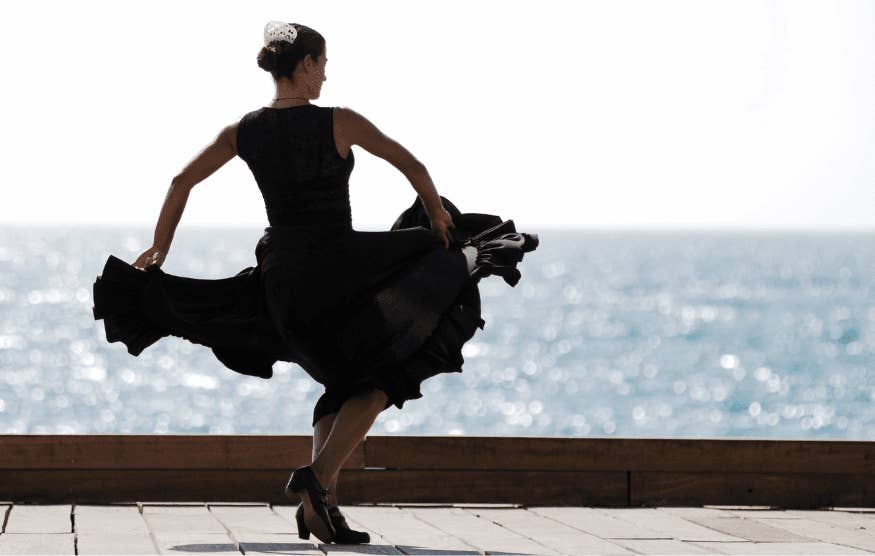61 Fun Spain Facts That Will blow Your Mind
December 22, 2022
Win a FREE Trip to Spain!
Exciting Announcement! For the first time, we're thrilled to offer exclusive trips to the heart of Spain - an experience like no other. This isn't your typical tourist journey; it's a unique opportunity to immerse yourself in authentic Spanish culture, alongside real locals and our passionate team.
But there's more! Simply by requesting information about this amazing trip, you'll be entered into a special draw to win a Fully Paid Trip to Spain for Two. And that's not all - everyone who inquires will receive an exclusive bonus gift, valued at $500, available only now.
Ready to Discover the Real Spain?Click Here ↑ to Request Information & Enter the Draw!
Spain is the only European country that produces bananas, did you know that?
Have you ever felt the sudden need to know about everything? You hear someone say a random but interesting fact about a place, and you wish you also knew that.
Well, after reading this article, you will know 41 fun facts about Spain that will give you the biggest picture of the country. This article has short and precise information from history to gastronomy, plus even more articles for you to review in Spain quickly.
So, follow me if you want to become the know-it-all of your family or friends!
Geography
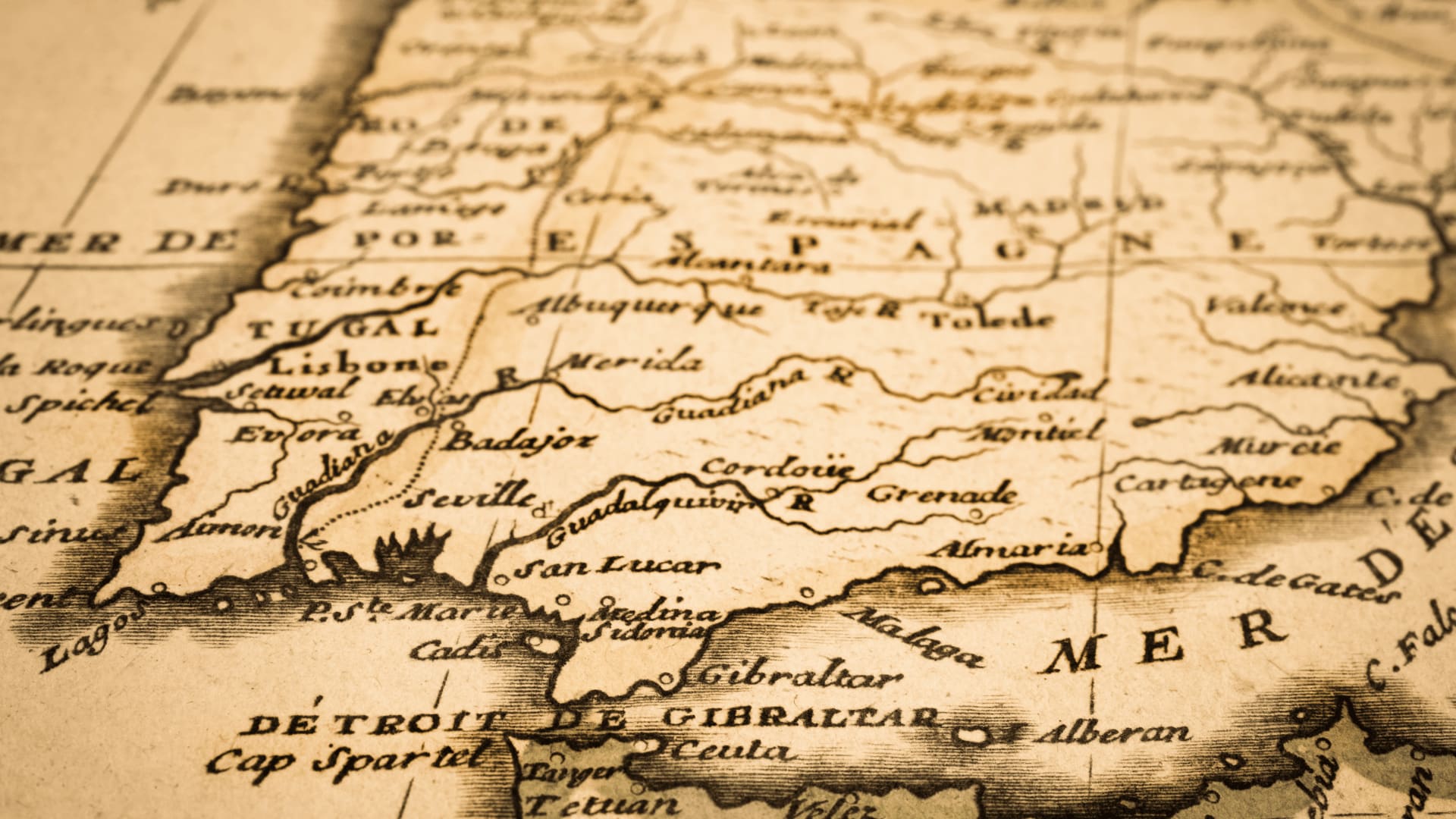
1. Spain is the biggest country on the Iberian peninsula.
The Iberian Peninsula is the 10th most prominent peninsula in the world. The Atlantic Ocean, the Bay of Biscay, and the Mediterranean Sea surround it. Spain’s neighboring countries on the Iberian peninsula are Portugal, France, Andorra, and a British colony, the Strait of Gibraltar (read more).
2. Spain is the second highest country in Europe.
Spain is over 600 m above sea level, which makes it the second highest country in Europe, after Switzerland, which is 1300 m above sea level.
3. The highest Spanish peak is not in Spain.
You read that right! Mount Teide is the highest Spanish peak, but it is not on the Iberian peninsula. Teide is a dormant volcano in the Canary Islands, specifically in Santa Cruz de Tenerife. It has an elevation of 3,715 meters, and the park where it is located is the most visited national park in Europe (read more).
4. Spain is home to the highest peak on the Iberian peninsula.
Be clear! Teide is the highest Spanish mountain, but Mount Mulhacén is the highest mountain on the Iberian peninsula. It is located in the mountain range of Sierra Nevada, Granada, and it is very easy to climb! The Mulhacén has an elevation of 3,482 meters, making it the highest mountain outside the Alps (read more).
5. If you’re coming to Spain, always check the weather
Spain has five different types of climatic zones: the oceanic climate, humid subtropical climate, hot and cold semi-arid climate, desert climate, and mountainous climate.
If you want to know more on Spanish nature, check this out:
9 Mountains Ranges in Spain for a Scenic Adventure
7 remarkable Spanish Countryside Locations for a perfect getaway
7 Different And Incredible Landscapes You Will Find in Spain
History and Culture
6. Spain has 15 UNESCO World Heritage Cities
Spain is filled with stunning places, but the most remarkable are the cities with traces of history. These cities are:
- Avila
- Baeza, Cáceres
- Cordova
- Cuenca
- Eivissa
- Merida
- Salamanca
- San Cristóbal de la Laguna
- Santiago Compostela
- Segovia
- Tarragona
- Toledo
- Ubeda
7. Spain was once called Al Andalus.
After the Roman Empire collapsed, the Celtics took over the Iberian peninsula, but they didn’t last long. The Germanic civilization was defeated by a middle eastern empire that took over Iberia for over 700 years. Spain was under the control of the Umayyad caliphate, and the dynasties to come ruled from 711-1492 (read more).
8. Spain was an essential extension of the Roman Empire
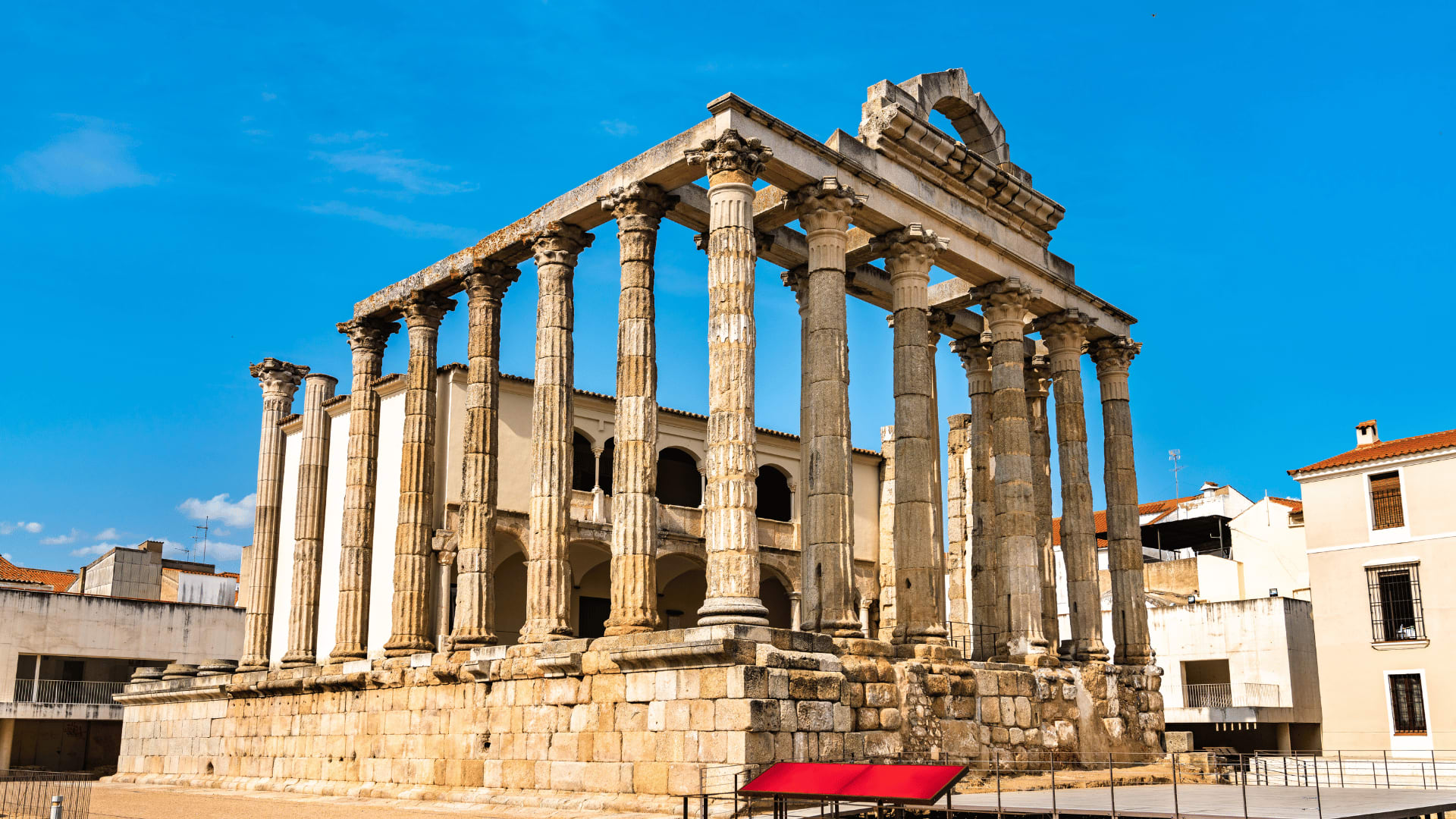
For two centuries, from 218 B.C. to 19 A.D., the Iberian peninsula was under the control of the Roman Empire. They left behind plenty of cities and masterful pieces of engineering like the Aquaduct of Segovia (read more).
9. Spain was home to one of the most important Roman Emperors
Trajan, Hadrian, Marcus Aurelius, and Seneca are known Roman Emperors and poets born in Hispania.
10. Spain is the fourth country with the largest UNESCO World Heritage sites.
From historical landmarks to natural parks, Spain has absolutely everything you would want to see. So, plan your vacations to the beach, mountains, or to the big cities in just one country.
11. Spain has a carnival similar to the one in Rio Janeiro.
The carnival of Santa Cruz de Tenerife is the second biggest carnival in the world after Rio de Janeiro. A party inspired by the Brazilian celebration, there is a carnival queen, celebrated the weekend after Ash Wednesday (read more).
12. Spaniards celebrate New Year with 12 (exact) grapes.
Eating 12 grapes at midnight on New Year’s is a tradition all over the country, but you must experience it in Puerta del Sol (read more).
13. Spain was one of the few countries to use purple in their flag

Well, I am not talking about the current Spanish flag. I am referring to the country during the “Second Republica” from 1931 to 1939. Very few countries use the color purple in their flag because it is expensive. Only three others (Dominicans, Nicaragua, and El Salvador) still use it.
14. The current Spanish flag hides a gate.
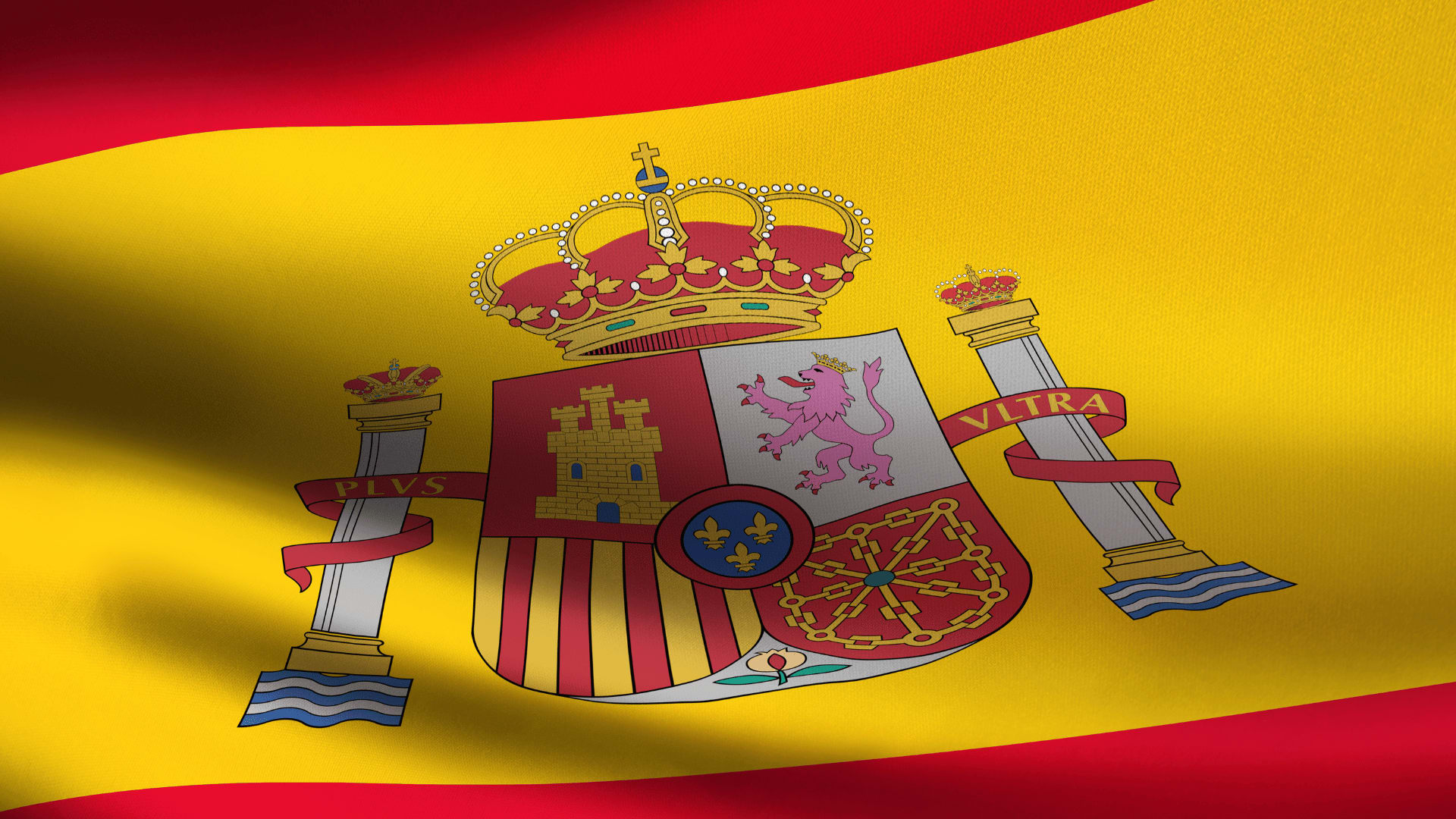
If you notice the coat of arms of the Spanish flag, there are two pillars over the sea. These pillars represent Gibraltar and the cities of Ceuta and Melilla.
15. The coat of arms in the Spanish flag hides a pomegranate.
What does it mean if you notice closely in the bottom of the coat of arms hides a small pomegranate? The fruit represents the Nasrid dynasty, the last Muslim dynasty in the power of Andalusia. The Catholic Kings added the fruit in 1492, which was the final addition to the kingdom of Spain.
In addition, the four flags in the coat of arms correspond to Castile, Leon, Aragon, and Navarra kingdoms, which were the most powerful before they united into one Empire.
16. The French have a little space in the Spanish flag.
I promise that the following is the last vexillology fact for today! House Bourbon is a French dynasty that also united and ruled in Spain (the current royal family belongs to this House). Their symbol is the “fleur de Lis,” representing honor, loyalty, and power.
17. Spain is two continents at the same time.
Never heard about that one before? Well, Spain is in Europe and Africa at the same time. Besides being the biggest country on the Iberian Peninsula, there are two independent Spanish cities in Africa, plus an archipelago. Do you already know what I am talking about? Ceuta and Melilla are two Spanish cities in the North of Africa that has been part of the country even before Morocco consolidated as a nation. Then the archipelago is the Canary Islands located on the western coast of Morocco and Western Sahara (read more).
18. Spain also had colonies in Europe!
The Spanish Empire was so mighty that they controlled powerful territories like Belgium, the Netherlands, Luxembourg, Burgundy, Naples, Sicily, Sardinia, and Milan.
19. Spain and Portugal were one country once.
From 1580 to 1649, the Kingdom of Spain and Portugal became one under the Spanish House of Habsburg. It all happened during the Portuguese Succession War. With the union of the two most extensive kingdoms on the peninsula, all the territories in the Americas, Castile, Aragon, Flanders, and the Indies, were under one rule.
20. Toledo was once the city of the three cultures.
Before the Spanish Inquisition, Toledo was known for its peaceful and prosperous community between Christians, Muslims, and Jews. If you visit the city today ( just a few minutes away from Madrid), you will see the Gothic cathedral, a synagogue, and mosques.
21. Spain is in the wrong time zone.
Spain should be sharing time zones with the United Kingdom instead of Germany. But how did this happen? Well, former dictator, Francisco Franco received a lot of help from Nazi Germany during WWII to recover from the Civil War. So, to show his gratitude, Franco decided to change time zones and share the same schedule as Germany and Italy.
22. Toledo still practices metallurgy.
There is no need for a sword in the 21 century, but that doesn’t stop sword crafters in Toledo. Instead of creating swords for battle, now people can visit and acquire pop culture swords based on media like the Lord of the Rings or Game of Thrones.
23. Madrid is not a natural city
I know this sounds weird, but Madrid is not a natural city like Toledo or Sevilla. Natural cities are those where people gathered and developed naturally for years, but that is not the case for Madrid. Spain’s current capital was planned out to be in the middle of the country and initially a middle point of the major kingdoms.
24. Before the euro, Spain used the “pesetas.”
After Franco’s death, Spain applied to the European Union and got accepted in 1986. However, the Spaniards kept their coin until February 2002, after three years of transitions from the national currency to the euro.
Get to know more about Spanish history and culture:
Is Spain in Africa? The 5 Spanish Territories in The African Continent
The Amazing History of Spanish Art and Its Influential Periods
Spain Borders: The Neighbors that share our peninsula, oceans, and controversy
Art and Culture
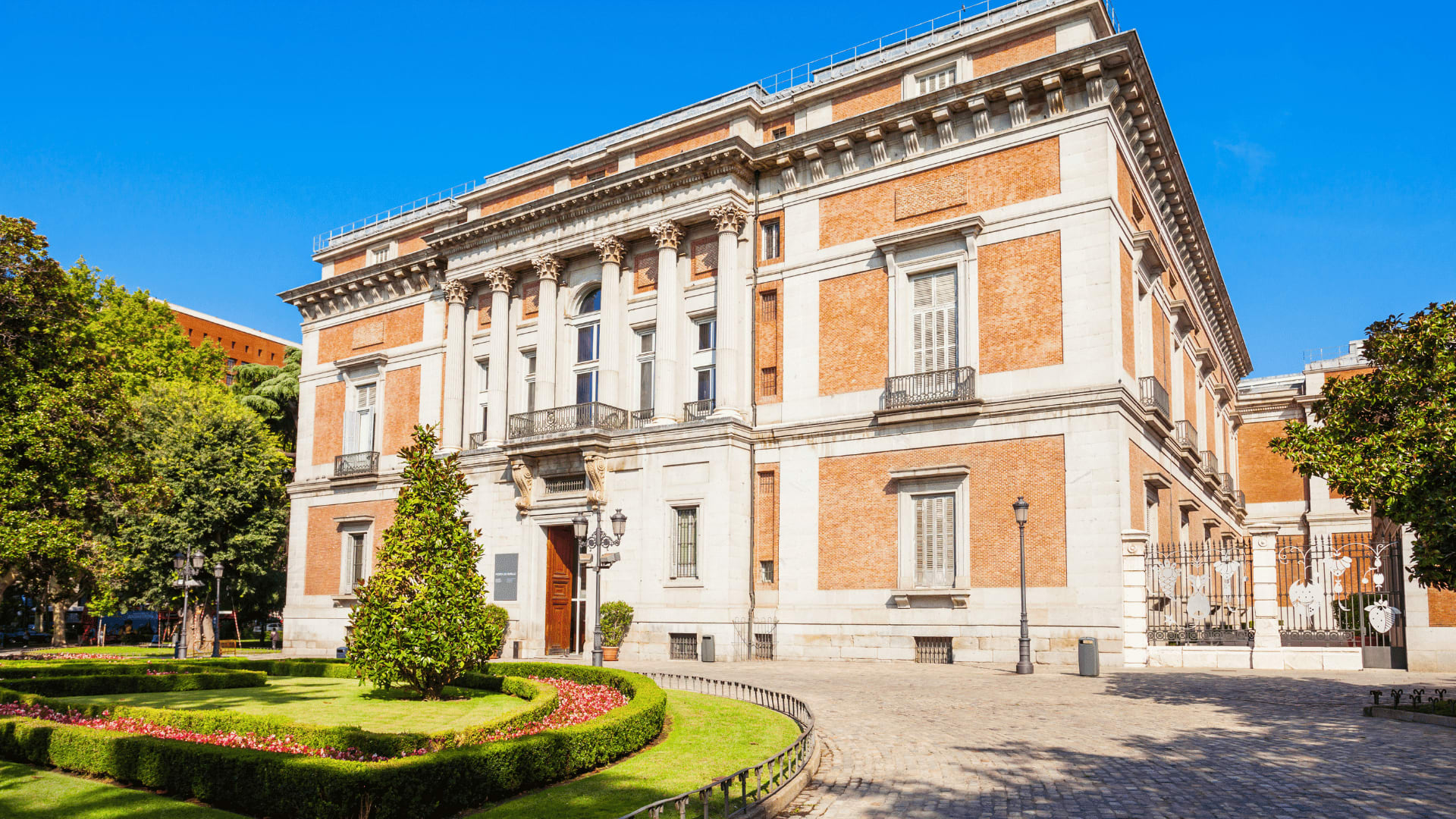
25. Spain is a living calendar.
Spain has events from the Three Wise Men to the San Fermines throughout the year. UNESCO has named some of its festivities and traditions Intangible Cultural Heritage. For example, flamenco, las Fallas de Valencia, the Human Towers of Catalonia, and the Tamboradas are considered intangible Spanish treasures.
26. People can experience an ‘Art Walk’ in Madrid
Madrid’s artwork would be the route from The Prado Museum, where you will see the Meninas by Velazquez and several of Goya’s pieces, such as Saturn devouring his son. If people follow the route, they will encounter the Thyssen Bornemisza, filled with modern art, and finally, the Reina Sofia Museum, which is home to the Guernica by Picasso.
27. The classical guitar is originally from Spain
Let us distinguish the classical guitar from the flamenco guitar; both might look very similar, but the final sound it makes is different and affects the music. The classical or Spanish guitar has been part of Spain’s culture since the middle ages, and Spanish crafters introduced significant innovations in the instrument (read more).
28. Spain is home to the third largest church in the world.
The Seville Cathedral is one of the most extensive Gothic churches in the world. It is 11520 square meters, and the breathtaking Giralda of Seville is part of it.
More on art and culture below!
The Best of Art in Spain for Beginners (4 Key Disciples)
9 Remarkable Paintings in Spain Considered Real Master Pieces
Music of Spain: A Complete Tour of its Amazing History and More
Nature
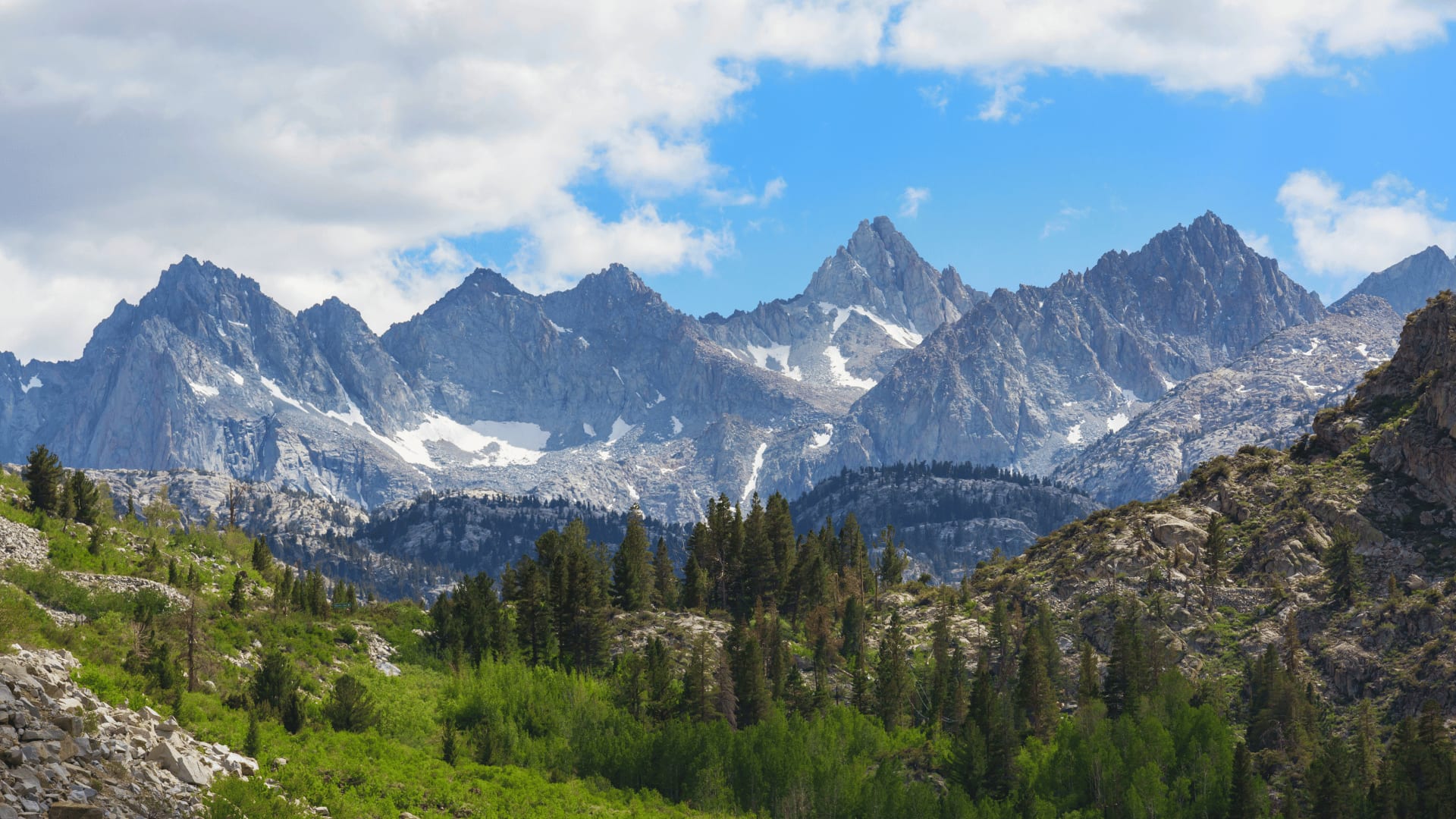
29. Spain’s national flower is the red carnation
The red carnations were not initially from Spain; the Arabs introduced them during Muslim rule. Still, Spaniards felt so identified with the flower that it became an important symbol for religion and flamenco (read more).
30. The evergreen oak is the Spanish national tree.
This beautiful tree is very common in Andalusia (Southern Spain). The Evergreen Oak is also known as the ‘holy oak’ and it is native to the Mediterrenean soil (read more).
31. Spain is home to the most visited national park in Europe.
The Teide National Park in Tenerife is the most attractive landmark in the Canary Islands and is home to the third-largest dormant volcano on Earth (read more).
32. The Pyrenees and the Sierra Nevada are the top ski destinations in Spain.
Most people know about Formigal in the Pyrenees as a top destination to ski, but most need to learn they can also enjoy some winter snow sports in Andalusia. Andalusia has one of the largest mountain ranges in the country, Sierra Nevada, which is also home to the tallest mountain on the Iberian peninsula (read more).
33. Your garden can become the winner of a festival in Spain
Every May, Cordoba hosts the “Fiesta de Los Patios de Cordoba,” where people open their houses to share their beautiful gardens with others. The protagonist of this fiesta is the bougainvillea which hangs beautifully from balconies or roofs. “Los Patios de Cordoba” has been declared an Intangible World Heritage (read more).
For all the nature lovers out there, here you you will find Spain’s natural treasures:
Nature in Spain: 21 Spectacular Wonders + Its Native Fauna & Flora
Movies and series

34. Spain was Game of Throne’s favorite film location
Okay, this might be a little exaggeration. But the cast of GOT visited Spain quite a lot to get some of the best locations for the story. I will list the main four below:
- The Real Alcazar and the close-by town of Italica in Seville (Andalusia) were the locations for Dorne and the Dragonpit.
- The Cathedral of Girona, the Bishop José Cartañà Street, and the Arabs Baths in Girona (Catalonia) were used as the Sept of Baelor, the streets of Braavos, and the Braavos baths.
- Itzurun beach and San Juan de Gaztelugatxe in the Basque Country were Dragonstone.
- The desert Bardenas Reales in Almeria (Andalusia) worked as the Dothraki desert.
35. Almería was the center of American western movies.
Do you remember those western spaghetti movies with cowboys, Native Americans, and damsels in distress? Well, most of those movies were filmed in the desert of Bardenas Reales in Almeria. Until today, the city has kept the old studios, and now they are recreational parks to spend the day as a cowboy.
36. Dubbing is very (very) common in Spain
Dubbing actually has a historical reason! During Franco’s dictatorship, audiovisual content must be translated and dubbed to change any ideas that differed from Franco’s rule. The practice stayed, and now it is very common that almost all movies are dubbed, and original versions last very little in the cinema.
I know you are going to love the following articles (ps: the one of Romance movies is our reader’s top choice):
Is Spain a Desert? Get to Know Our Stunning Filmset Landscapes
11 Famous Movies You Didn’t Know Were Set in Spain
Language
37. In Spain, people speak more than Spanish
I am not talking about English or French as second languages; I am talking about native dialects that have existed as long as Castilian. These are Catalan, Galician, Aranese, Valencian, and Basque.
38. Historians still don’t know where Basque comes from.
This is absolutely true. Just like Catalan, French, Italian, Castilian, all come from Latin, known as Romance Languages, historians don’t know where Basque comes from. The Basque have been on the northern part of the Spanish territory for years, even before the Romans! Those there is no clue of the origin of this language.
39. Over 20 countries speak Spanish, thanks to Spain.
We all know that half of America speaks Spanish because they were all colonized by the Spanish Empire. However, they are not the only ones! The Philippines have Spanish as its second tongue, and Equatorial Guinea has it as its official language.
Interested in the world of languages? Check out everything we have on it:
Why is Spanish hard? 9 Reasons why this language is so difficult!
Is catalan a language or a dialect? The Beloved Soul of Catalonia
History of The Spanish Language 101: From the Romans to Today!
The Language of Iberian Peninsula: Interesting Facts We Should know!
Festivities
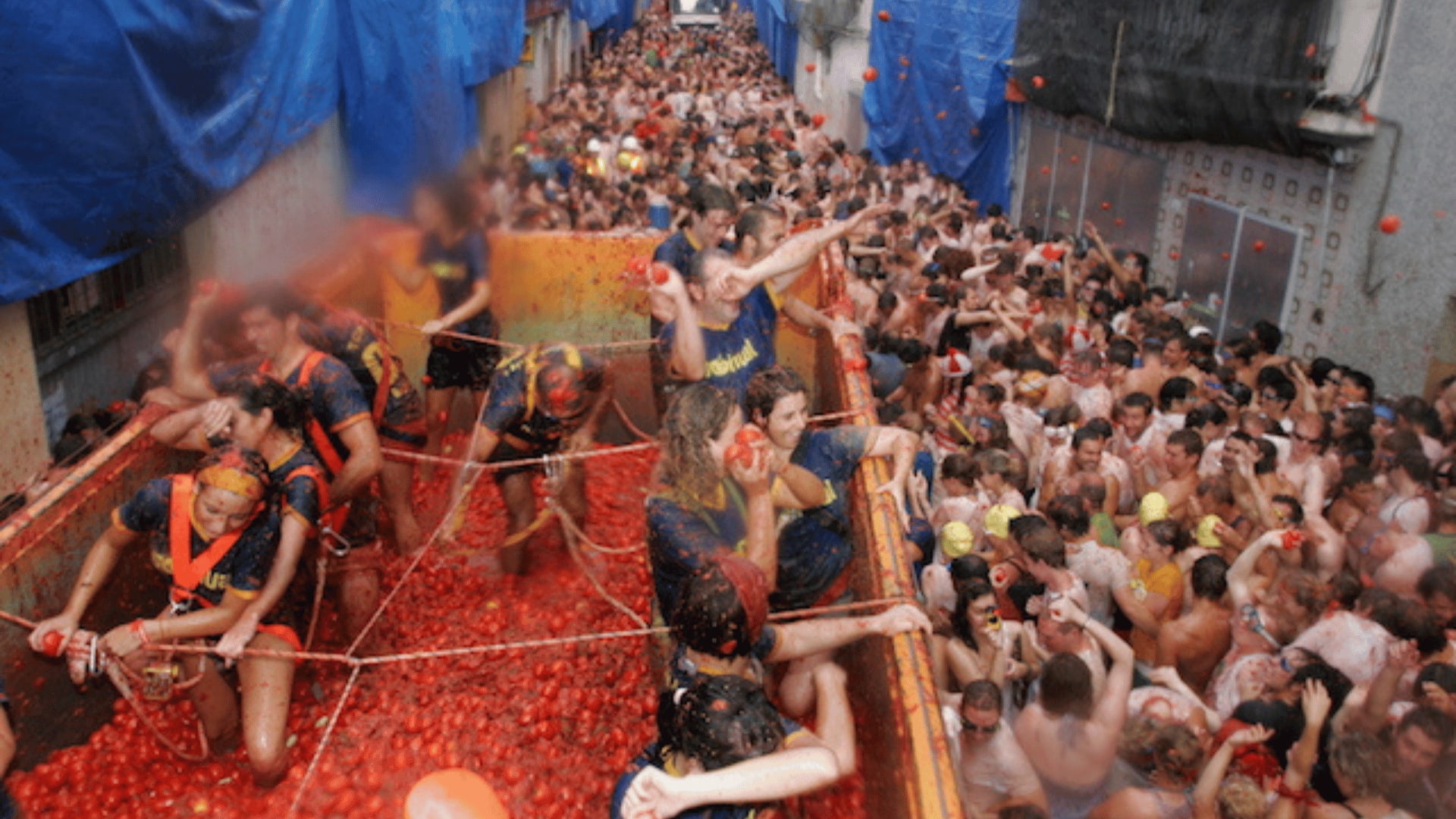
40. San Fermines is one of the most expected parties in the world
The “San Fermines” or the Running of Bulls in Pamplona (Navarra) is one of the most expected parties in the world! From the 6th to the 14th of July, people gather in the narrow streets of Pamplona to party all day long. People from around the world and from other Spanish cities visit wake up early to see (or run) the bulls and then party all day long (read more).
41. Spaniards also have a wine battle
Yes! Besides “La Tomatina,” Spaniards also have the Wine Battle of Haro in La Rioja. If wine is your to-go drink, this is your party. Every June 29th, more than ten thousand people gather in the main square of Haro wearing white clothes to pour liters and liters of wine to each other.
42. The most significant food fight in the world is in Valencia.
La Tomatina is the biggest food fight in the world!! This is your party if you ever want to throw tomatoes at random people. La Tomatina takes place in Buñol, a town close to Valencia, where more than 30,000 people visit every August to create a lifetime experience.
Food and Commerce
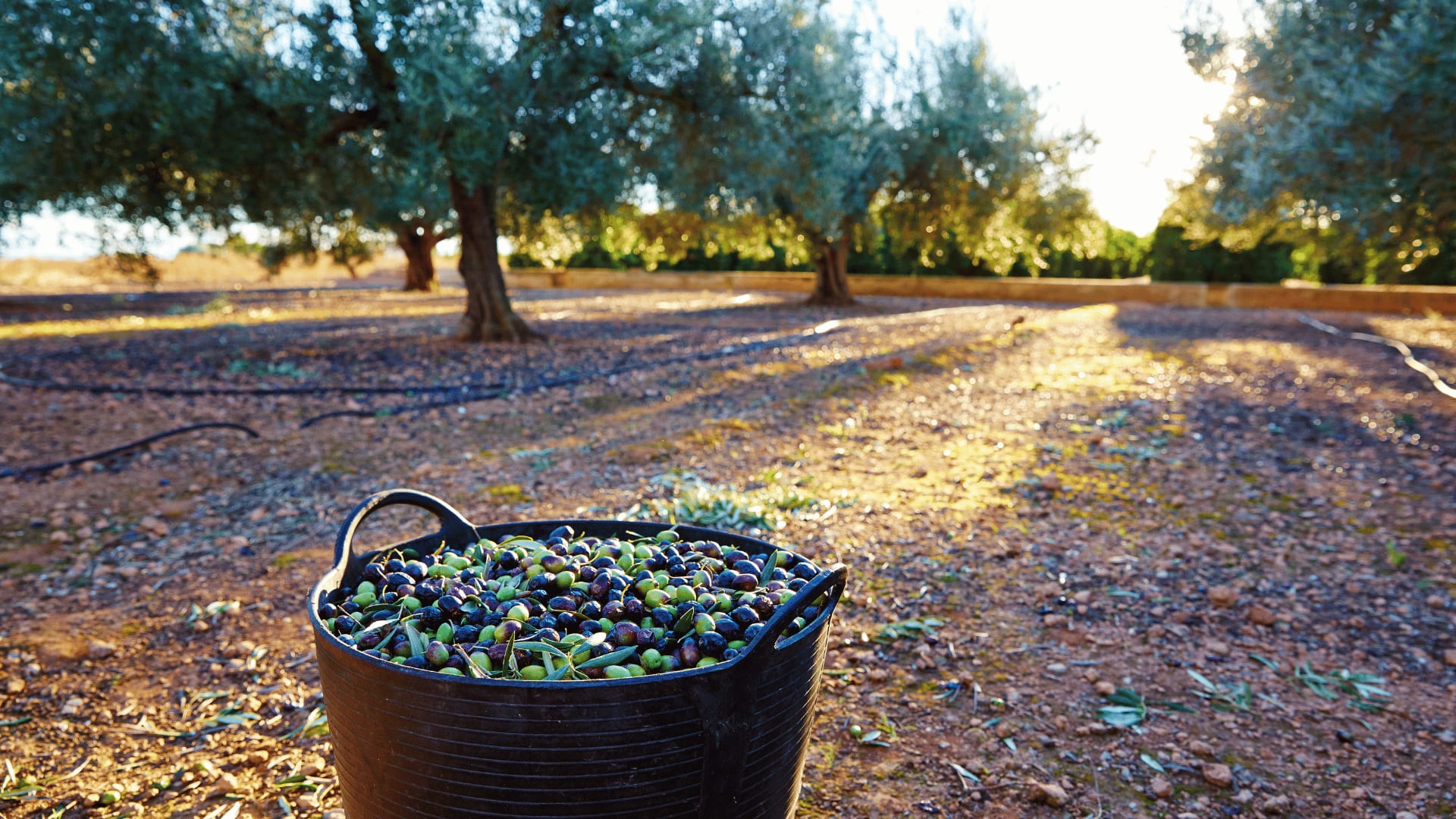
43. Spain is the only country in Europe that produces bananas
Remember the Spanish-African islands? The Canary Islands? Well, the production of bananas is possible because of the soil and conditions in this territory.
44. In Spain, e-v-e-r-y-o-n-e eats olive oil
Spain is responsible for almost 45% of olive oil production in the world, so they don’t just export it but use it for all of their foods.
45. Throwing napkins to the floor is normal
It doesn’t sound very good, but this is normal. Traditional Spanish taverns are tiny, and their bar is usually crowded. So, people go up to the bartender, ask for beer, get a beer and a tapa, eat it, clean their hands, throw the napkin to the floor and leave. I am guessing that the bars need such circulation that there is no time for staff to keep cleaning, so at the end of the day, they would sweep all the trash and tidy for the next day (read more).
46. Spanish drink cold tomato soup and is not a Bloody Mary
Spaniards love their “gazpacho”! It is a cold soup made of raw vegetables, with tomato as the main ingredient. Even though in under the “soup” category, people drink it as if it were juice. To give you a little heads up, it tastes las blended salad.
47. Spain is the second most significant wine producer in the world.
Spain produces more than 3.37 million tonnes of wine a year! Spain, alongside France, Italy, and the United States, is responsible for the world’s 85% of wine production.
48. In Spain, people love their wine!
The country is the 6th in the world with the highest wine consumption. Spain is behind the USA, France, Italy, Germany, and the U.K.
Royal Family
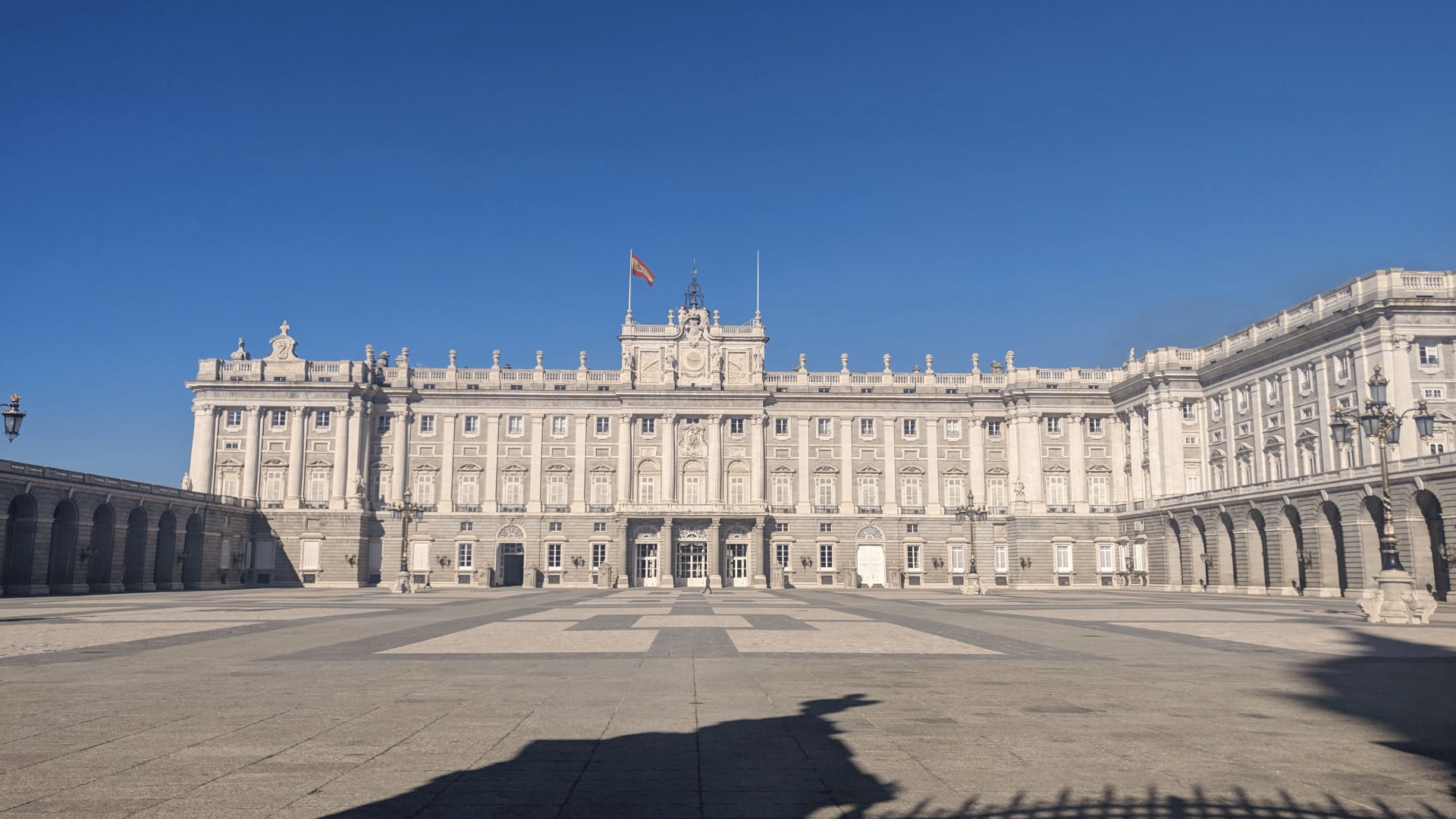
49. Spain has a constitutional monarchy
Spain is part of the thirteen countries that keep a type of monarchy as part of their government. A constitutional monarchy “is a form of monarchy in which the monarch exercises their authority by a constitution and is not alone in decision making” (read more).
50. In Spain, a dictator chose a king to succeed him.
The current Spanish Royal family was put in place by Francisco Franco. The former dictator chose the previous and exiled King Juan Carlos as his successor after his death.
51. King Felipe is the youngest ‘ruling’ royal in Europe
Well, he is the youngest European King by a year! King Felipe is from 1968, and King Willem from the Netherlands from 1967.
52. Queen Leticia doesn’t have royal blood.
Queen Letizia Ortiz meet the King while working as a journalist for CNN+ and EFE. She has no connection to royal families and has a specific role to perform as the Queen of Spain (read more).
Random Facts

53. Spanish kids don’t believe in the tooth fairy; they believe in a mouse.
Did you watch ‘Rise of the Guardians’? In this movie, you know every fairytale character related to cultural traditions and customs, such as the Easter Bunny or Santa Clause. Well, there is a scene where the tooth fairy encounters Ratoncito Perez and explains that he is from the Hispanic division. This character was born out of a story of a future king of Spain, and now Ratoncito Perez plays a vital role for kids in Spain and most Latin American countries (read more).
54. Spain has a mysterious lost city
Remember the legend of Atlantis? Well, some historians argue that a text by Platon left clues on where Atlantis might have been located. A few years ago, all the answers led to Doñana National Park in Andalucia (read more).
55. Spain is a TOP exporter of ham
Who hasn’t heard of the “jamón serrano”? This is one of the most famous Spanish delicacies, and we are the fifth biggest exporters of ham after the United States, Netherlands, Denmark, and Germany (Tridge).
56. Spain has one of the fewest birth rates in Europe
Alongside Italy, Greece, Cyprus, and Luxemburg, Spain has one of the lowest birth rates in Europe, with 1.23 live births per woman (read more).
57. The first novel was Spanish.
Have you ever heard the phrase: “Somewhere in La Mancha, in a place whose name I do not care to remember…”? It is the beginning of the first revolutionary, modern novel on Earth, Don Quixote. Miguel de Cervantes was the Spanish author who gifted the world with the new genre of impractical chivalry; he introduced several real-life topics through the perspective of different characters (read more.)
58. Madrid has the oldest restaurant in the world
The Botín restaurant opened in 1725 close to Plaza Mayor, and it was so famous that even the artist Francisco Goya worked there a few times.
59. For half a year, Spain shared an island with France
The Pheasant Island is located in a very narrow river between Spain and France, and every half year, they hold a ceremony to give and receive ownership of the island.
60. Spain is the second most visited country in Europe
Spain is right after France as the most visited country in Europe. It receives more than 82 million visitors a year, being Ibiza, Barcelona, and Madrid as the most visited cities.
61. Spain is one of the European countries with the most holidays
Alongside Poland and Switzerland, Spain is the eighth country with the most holidays in Europe. It has a total of 82 days of holidays.
Here are your 41 fun and random facts about Spain! Now you know a little bit of absolutely everything!!! Spain is a country of many wonders; my personal recommendation is that you learn better by visiting. So! Let’s start a savings account and plan your dream vacation in Spain.







